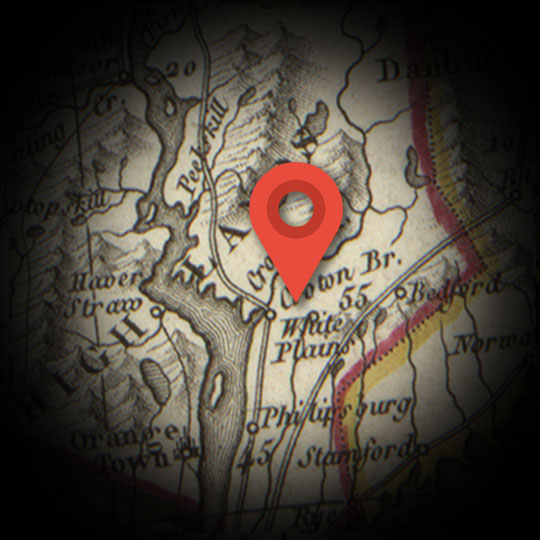WHITE PLAINS
Explore
When the armada of British expeditionary force ships began to be sighted around New York City in the summer of 1776, New York’s Third Provincial Congress—the lawmaking body of the colony’s revolutionary patriots—fled. They reassembled in White Plains, 25 miles north of Manhattan.
It was here that New Yorkers debated and adopted the Declaration of Independence, and that the former “province” was reborn and reorganized as the “State” of New York on July 11, 1776.
Alexander Hamilton, as recounted in New York City locations Battery Park and The Battle of Harlem Heights, had been among the various patriot forces struggling in vain to halt the enemy onslaught once it began in earnest in August and September. By early October, it had become clear to General George Washington that Manhattan Island would have to be abandoned all together. Washington would, furthermore, have to counter British attempt to trap the American forces both north and south after landing at Throg’s Neck, in the Bronx, on October 12.
Washington gave orders for the men under his command to proceed for safety across the Hudson River and up to White Plains.
The retreating patriot forces quickly readied themselves for confrontation. When the British under General William Howe finally met them in White Plains on October 28, there was a scramble to secure Chatterton’s Hill, a strategic high ground west of modern downtown White Plains (but which in 1776 was a swamp).
Alexander Hamilton was present in the day’s combat, but the New York company of artillery he commanded—which by that point retained only two cannon pieces—had been attached to the brigade of General Morin Scott, and placed on another nearby hill.
The British had to make several costly attacks to force the Americans off Chatterton’s Hill, and were ultimately unable to bring the American forces to a decisive defeat that day.
Howe ultimately disengaged and marched his troops back to Manhattan Island.
Alexander Hamilton would follow Washington’s subsequent orders to leave White Plains, cross the Hudson again, and begin a long withdrawal into New Jersey.
Hamilton and Washington, at most, had made the most superficial of mutual acquaintances during and prior to the Battle of White Plains. That would all be profoundly changed two years later, when Hamilton returned to White Plains while it served as George Washington’s headquarters in the summer of 1778.
By this point he was firmly one of Washington’s most favored aides-de-camp, and playing a crucial role as translator during this period when the American and French forces were undertaking their first join military missions.
In July, August, and September of 1778, however, Hamilton was personally out of immediate war danger—and from White Plains he would have the adequate leisure time to write long letters to his friend Elias Boudinot, away serving in Congress in Philadelphia.

TIME FRAME:
Oct 1776, July-Sept 1778
